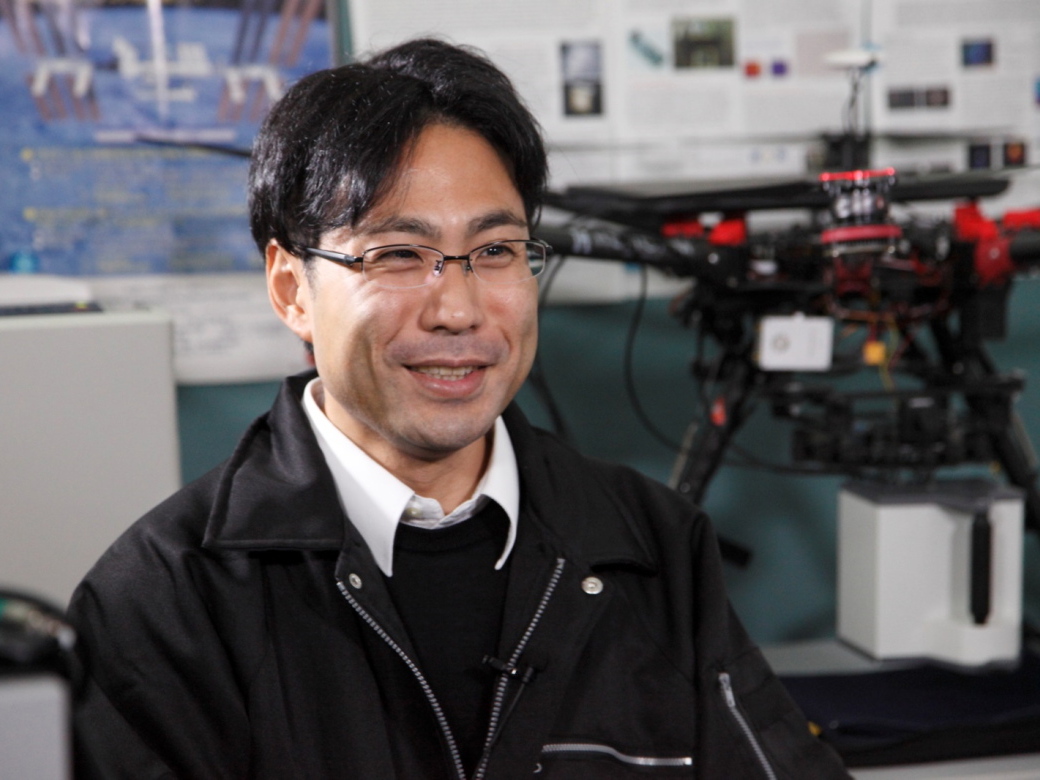Waseda Frontline Research Vol. 13: Visualizing the invisible! The future of radiation imaging (Part 1 of 3)
Wed, Feb 15, 2017-
Tags
High-Energy Astrophysics Researcher
Professor Jun Kataoka
Department of Applied Physics, School of Advanced Science and Engineering, Faculty of Science and Engineering
Adventure in exploring the abyss of the universe
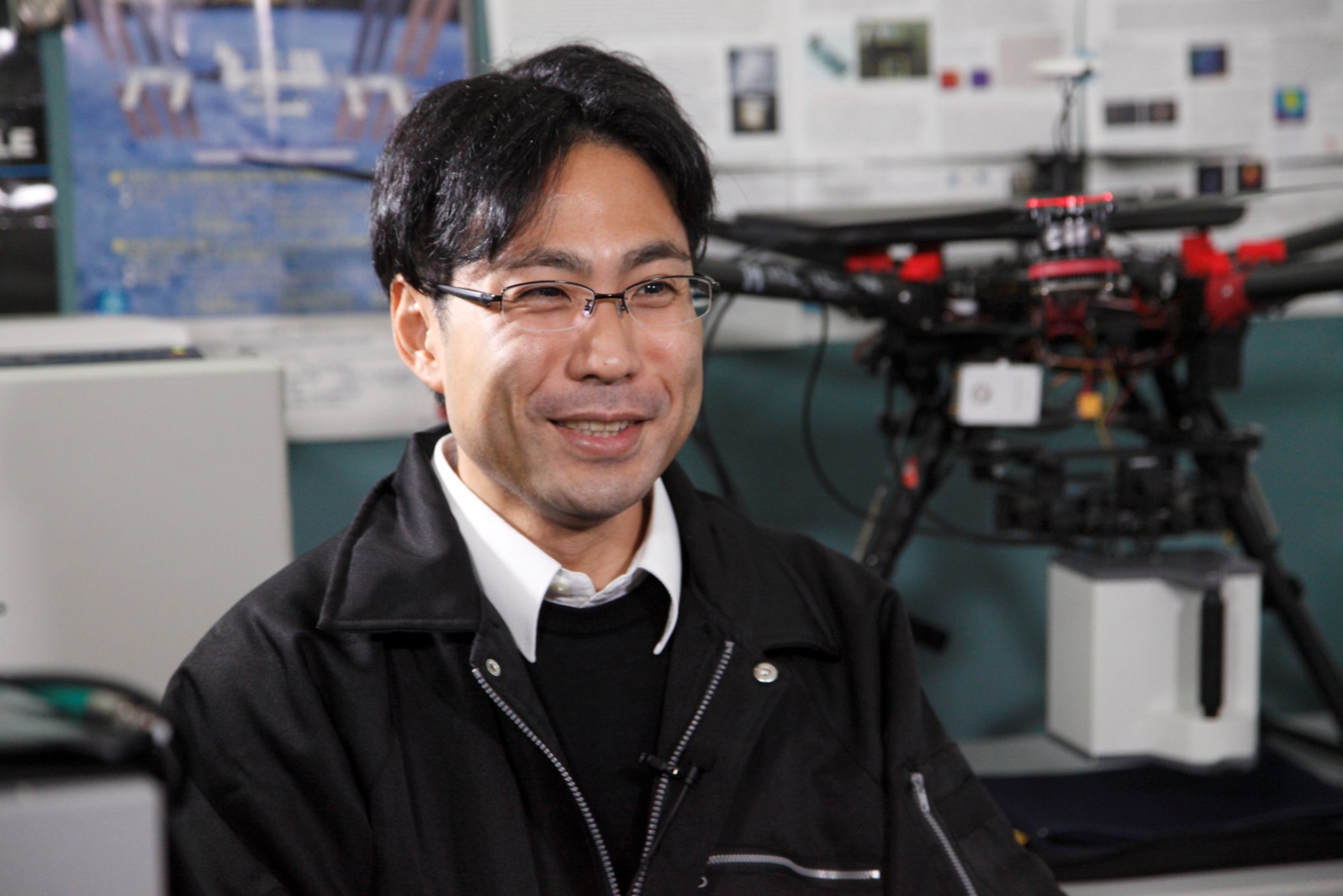 The Center for Research Strategy interviewed Jun Kataoka, a professor of applied physics at Waseda’s Faculty of Science and Engineering. Professor Kataoka has made many impressive achievements mainly in cutting-edge experimental astrophysics research, as well as in the medical and environmental fields.
The Center for Research Strategy interviewed Jun Kataoka, a professor of applied physics at Waseda’s Faculty of Science and Engineering. Professor Kataoka has made many impressive achievements mainly in cutting-edge experimental astrophysics research, as well as in the medical and environmental fields.
(Interview date: December 21, 2016)
The possibilities of radiation imaging
I am a researcher of high-energy astrophysics, especially focused on studying a companion of light, radiation, namely X-rays and gamma rays. Obviously different from visible light, X-rays and gamma rays also differ from radio waves and infrared used for, for say, Wi-Fi communication and stoves respectively. Most people may not be familiar with how short-wavelength X-rays and gamma rays are used, but with my particular interest in them, I would like to take my research to a level where it contributes to widespread applications in society.
What makes this research intriguing is that there is a need for X-rays and gamma rays imaging in incredibly a broad range of areas. In space science, imaging is expected to help visualize the macroscopic extreme as the new eye to “see” the universe. Additionally, exploring the microscopic world such as the elementary particle phenomena becomes reality using this technology. In other words, observing both ends, from the minimum to the maximum, can be done simultaneously. On the other hand, it is possible to apply the same technology for sectors such as the medical and environmental fields, helping to make a difference in society. Inclusively covering different fields this way feels rewarding.
Another exciting factor is that X-ray/gamma-ray astronomy has a very short history, and it is a growing field where there is a lot of room for development ahead. A gamma-ray telescope would be able to capture objects that could not be observed with a visible light telescope, meaning that creating such observation devices will expand opportunities. Of course, the global competition in this area is intense, but I believe this study is quite inspiring.
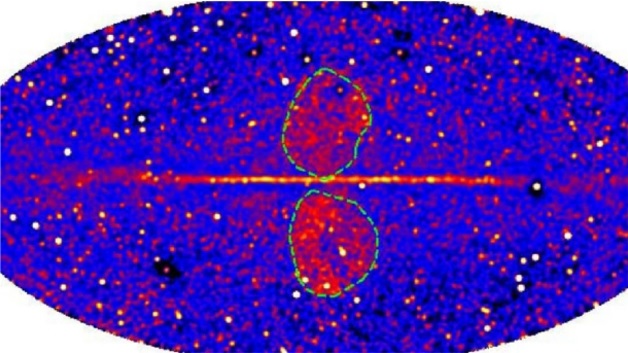
Giant gamma-ray “bubble” structure discovered by Fermi satellite. In the laboratory, with follow-up X-ray observation, we are also making new discoveries on the temperature of the plasma surrounding the bubbles and the dynamics of the explosion phenomenon which occurred at the center of the galaxy in the past (Source: Kataoka Laboratory)
A boy astronomer’s dream
For me, both conducting research and developing new equipment are two essential pillars. Though there are many researchers who are either satisfied with just analyzing data or just creating devices, I want the devices I develop to be put to practical use by many people instead of letting it sit in laboratory shelves. Moreover, I also believe that making your research with data analysis public, by publishing papers and giving presentations at academic societies, is the mission and crucial role of a researcher.
From the very beginning, I was an astronomy boy who made his own telescope with PVC pipes and observed the Galilean satellites of Jupiter every night while keeping records of it. When I think back, I feel like my dream of wanting to explore the universe and build a telescope by myself for that purpose has led me to my current research.
When I was a student, I was not completely committed to physics. The world of medicine also interested me, and even during university examinations, I could not decide until the last minute on whether to go on the physics track or the medical track. I eventually decided on physics, but because I also wanted to engage in medicine at the fundamental level, I felt I could contribute to medical science as a physicist. From there, the idea of developing a next-generation device that can redefine equipment used in medicine was born. The concept of contributing my research to medical care and other fields comes from this idea.
Additionally, the importance of disseminating knowledge should also be emphasized. My words may be a little harsh, but no matter how much I highlight what I have done at domestic academic conferences and research meetings, that alone would not be enough. After all, research will end at my own self-satisfaction if it does not take form of a result. I put effort in output, such as paper publications and media releases, with the attitude that only publishing a paper in the world’s top journals or having the research recognized internationally is the equivalent of doing something. I also keep the possibilities for commercialization close in mind when developing devices.
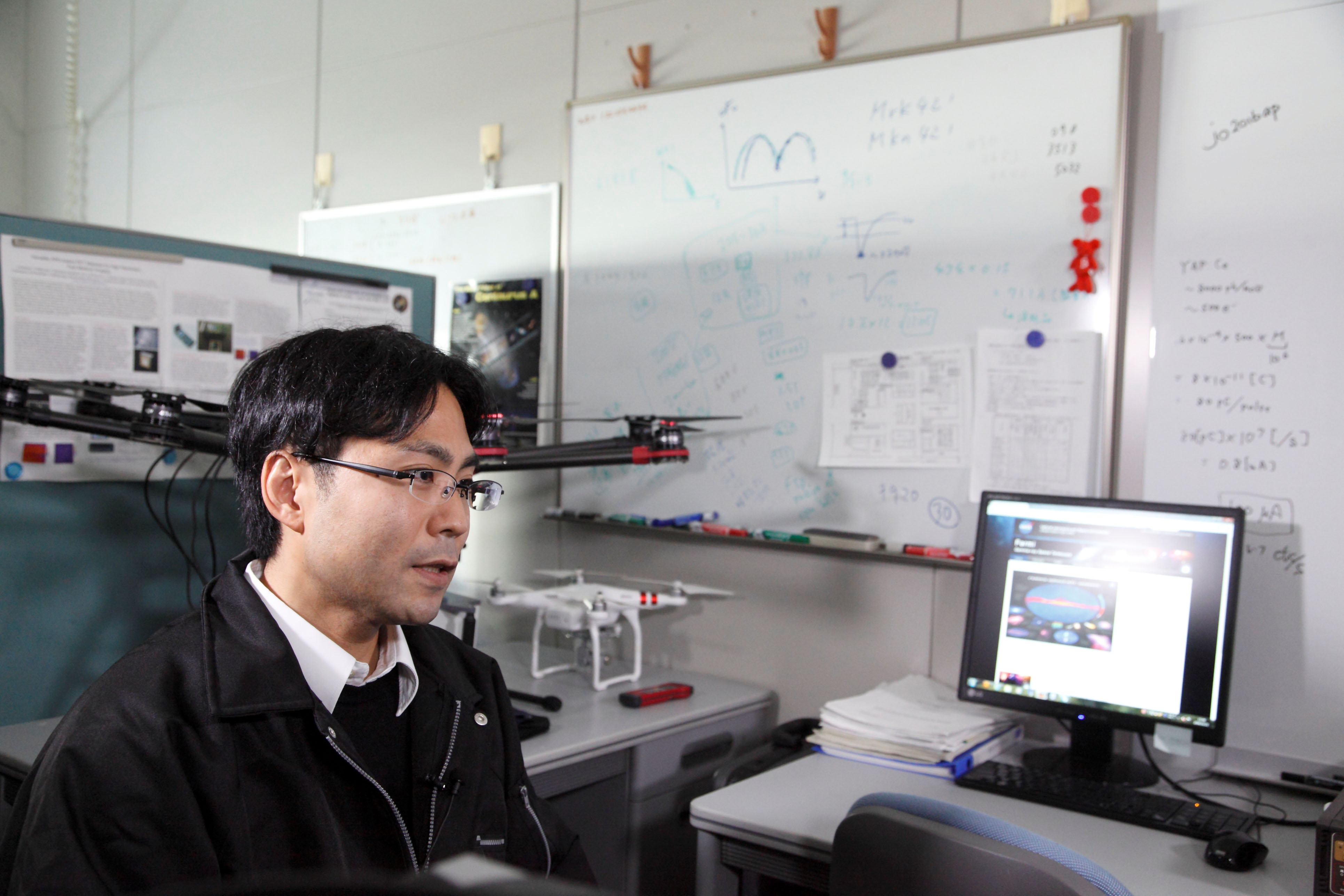
Professor Kataoka explaining high-energy astrophysics in a way that is easy to understand.
Discovery of “black widow” pulsars
One of the major themes of my research is the data analysis of the Fermi Gamma-Ray Space Telescope (Fermi Satellite), the scientific astronomy satellite launched in 2008. Although only about 100 bodies emitting gamma rays were previously known, more than 3,000 have been discovered after the launch of the Fermi satellite. Among them, there are still many unknown celestial bodies. Following the discovery of a new kind of gamma-ray galaxy in 2009, my laboratory succeeded in observing a new kind of neutron star called a “black widow pulsar” in 2012.
By conducting follow-up observations on one of the Fermi-observed gamma-ray objects from the X-ray astronomy satellite “Suzaku” and ground-based telescopes nationwide, we found that this celestial body is a binary system at the time. Then, we discovered that X-rays radiating from the main star contains components emitted from high temperature objects via spectral analysis, proving that the main star was a “pulsar” radiating high temperatures and rotating at high speed. By further analyzing the data, we concluded that it is a “black widow pulsar,” a neutron star that melts companion and surrounding stars at high temperature.
Such a celestial body was predicted theoretically, but it was never actually observed. Behind making this discovery was not just perfunctory analysis, but rather a standpoint considering a working hypothesis from various angles, asking questions about the kind of radiation it would emit if it did exist and adjusting analysis methods from there.
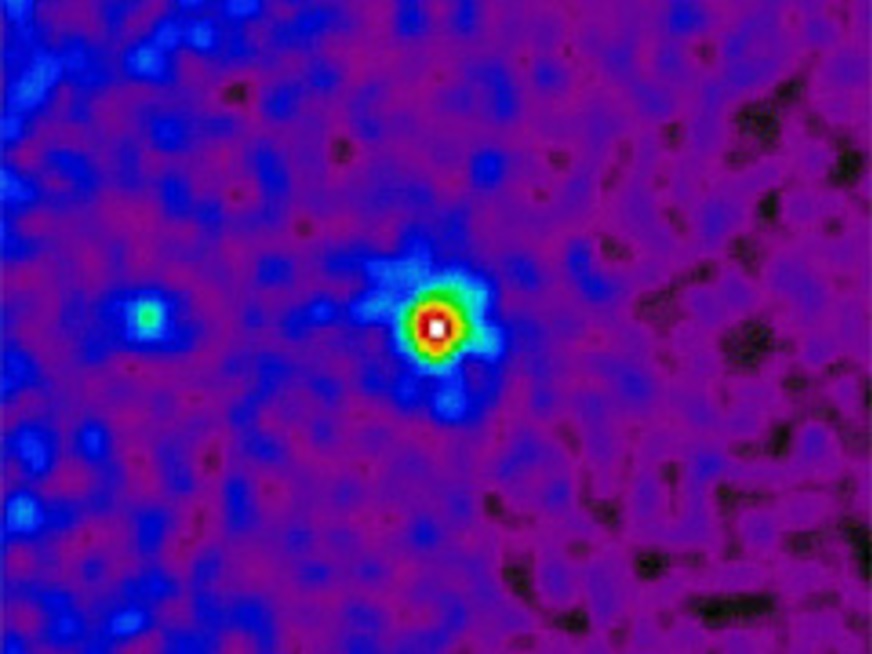
Photo: A new class of gamma-ray galaxy discovered by Fermi telescope. The group led by Professor Kataoka found two new “gamma-ray galaxies” in an international collaborative research, including members from NASA. (Source: Kataoka Laboratory)
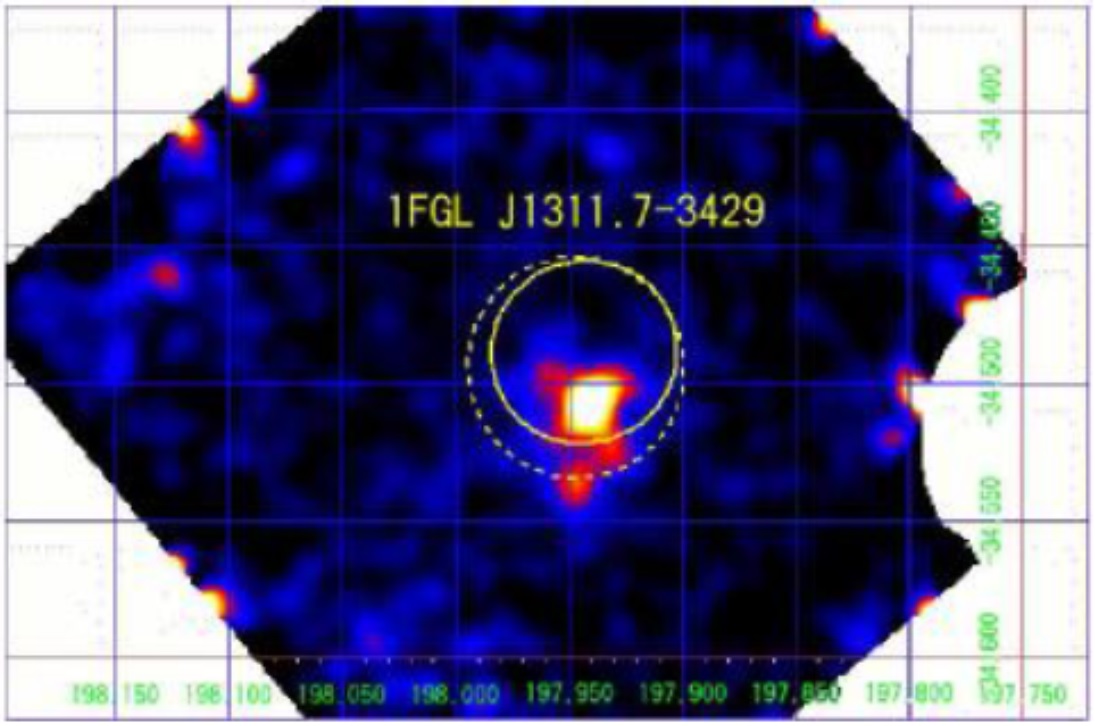
Photo: A new kind of pulsar celestial object observed by Suzaku satellite. Research conducted in collaboration with a group from the Tokyo Institute of Technology and presented to press at the Astronomical Society of Japan. (Source: Kataoka Laboratory)
High-performance Avalanche Photosensor
We have been advancing device developments that use APD (Avalanche Photodiode) and MPPC (Multi-Pixel Photon Counter), which are optical sensor with internal amplification, in cooperation with Hamamatsu Photonics K.K. since 2003. In particular, over 60 compact, high-performance APDs designed and developed by my laboratory were used for the hard X-ray imager (HXI) and the soft gamma-ray detector (SGD) mounted on the ASTRO-H satellite “Hitomi,” which was launched in February 2016.
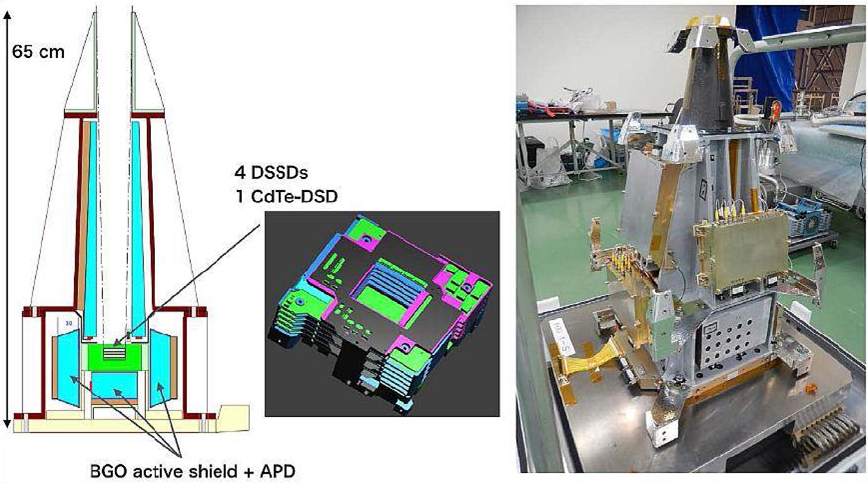
Photo: HXI detector mounted on Astro-H satellite using many compact, high-performance APDs (optical semiconductor amplification detector: Avalanche Photodiodes) developed at the Kataoka Laboratory for BGO scintillator readout (Source: Kataoka Laboratory)
As a result, there are now APDs of the same type we developed on a number of satellites, and they are sending observation data in good condition. Our APD is also installed in the CALET detector, developed by Waseda’s Torii Laboratory, and the ERG Satellite “Arase,” just launched the other day. With sensitivity never been reached before, these satellites are expected to find new celestial bodies. However, space science is a world requiring a long span of time where one satellite could take as much as 5 or 10 years to launch, so I hope to work patiently.
From space to medicine and the environment
X-ray/gamma-ray astronomy still has a short history, but Japan has made major and groundbreaking results so far and has become a flagship in the world. How can high-quality data be obtained by packing high-performance detectors among the limited resources of satellites? People from other countries are surprised when seeing how high the density and quality of Japanese lunch boxes are, and this is perhaps partly linked to satellite development. Japan is at the top level in the world for such technology and know-how, and I will continue to conduct research, as I find intellectual pleasure in doing so.
In addition, the devices we have developed for space science have changed in shape and been applied in the medical and environmental fields. Efforts made for practical use, such as medical inspection instruments and radiation visualization, are bearing fruit, and we hope that attention will also be drawn to these possibilities.
Next, Professor Takaoka will discuss applying his research’s technology cultivated for space science to the medical field.
☞Click here for Part 2
☞Click here for Part 3
Profile
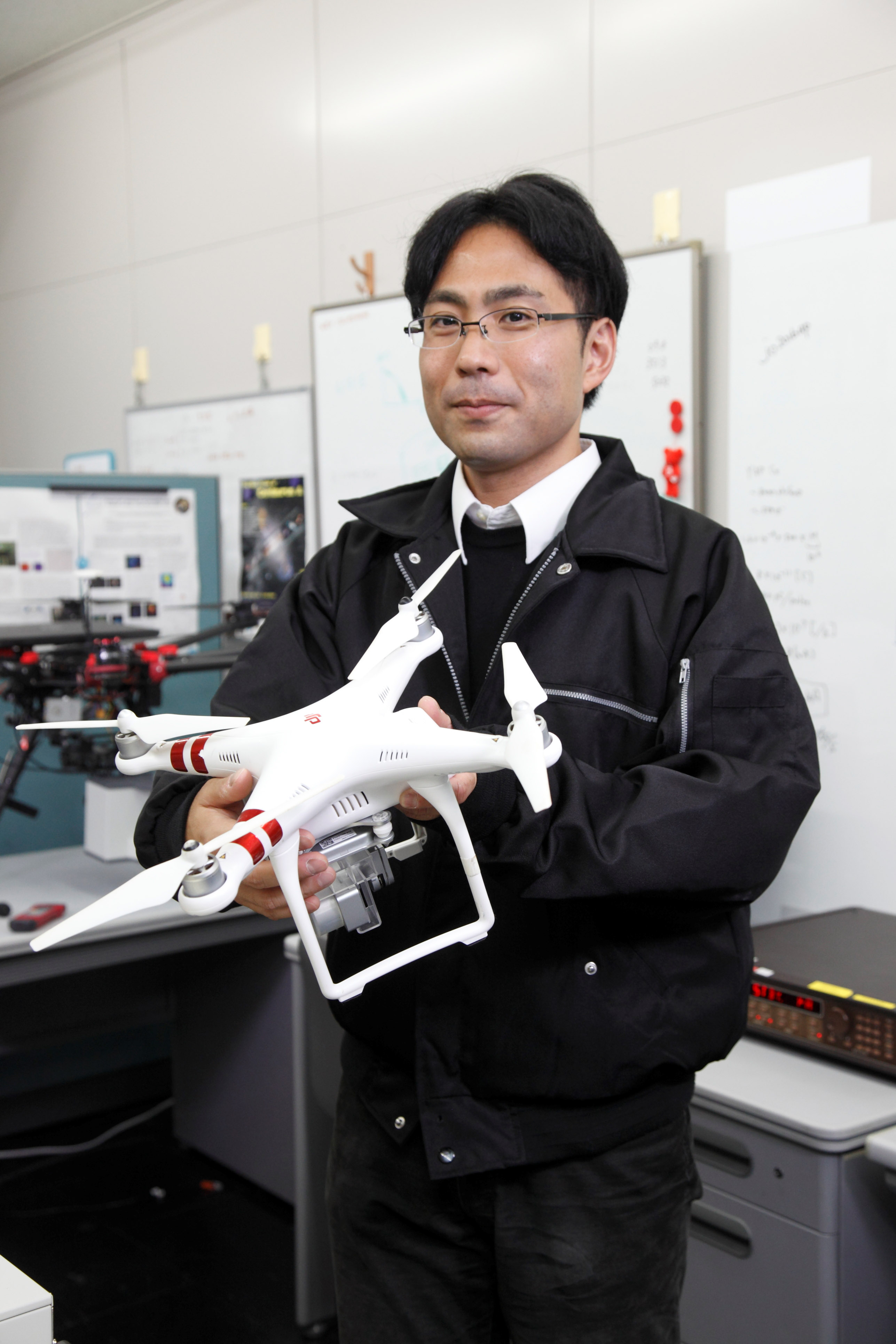 Jun Kataoka
Jun Kataoka
Professor Kataoka graduated from the University of Tokyo’s Faculty of Science in 1995 and its Graduate School of Science in 2000 (Doctor of Science). He became an assistant at Tokyo Institute of Technology’s Graduate School of Science and Engineering in 2001 and later appointed as assistant professor in 2007. From 2009, he served as associate professor in the Graduate School of Advanced Science and Engineering at Waseda Research Institute for Science and Engineering. He has held his current position as professor of physics and applied physics since 2014.
Website: Kataoka Laboratory
Major achievements
Publications
- Inverse Compton X-ray Emissions from TeV Blazar Mrk421 during a Historical Low-flux State Observed with NuSTAR (The Astrophysical Journal, 2016, in press)
- Compton cameras for visualization of radioactive isotopes (KOGAKU,The Optical Society in Japan, 2016, in press)
- Global Structure of Isothermal Diffuse X-ray Emission along the Fermi Bubbles (The Astrophysical Journal, 2015, vol.807, p.77 (13 pages))
- Recent progress of MPPC-based scintillation detectors in high precision X-ray and gamma-ray imaging
(NIM-A, 2015, vol.784, p.248) - Suzaku Observations of the Diffuse X-ray Emission across the Fermi Bubbles’ Edges
(The Astrophysical Journal, 2013, vol.779, p.57) - Other publications available here
Awards and recognition:
2001 Cosmic-Ray Physics Achievement Award
2004 The Astronomical Society of Japan Young Astronomer Award
2009 NASA Group Achievement Award
2012 The Young Scientist’s Prize from the Minister of Education, Culture, Sports, Science and Technology
2013 Publications of the Astronomical Society of Japan Excellent Paper Award (Co-authored)
2014 Waseda Research Award (High-Impact Publication)
2016 Waseda University’s Core Researcher of the Next Generation
Recent news on research
・Compton camera for 3D multi-color molecular imaging, in the palm of your hands
・Imaging scattered radionuclides distribution in gamma-ray shooting, using a drone


